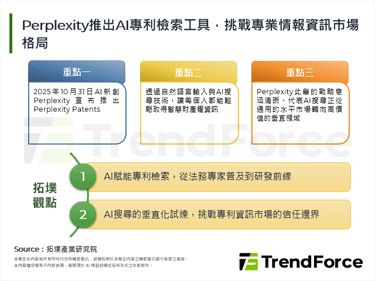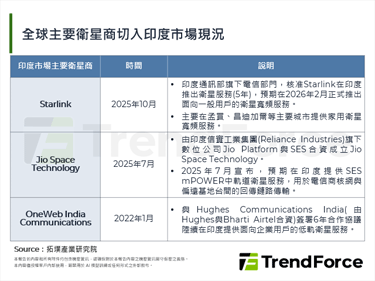Semiconductor out of Doldrums to Recover Slowly but Surely in 2010
Year 2009 has seen global economy freeze to sink consumer electronics sales to rock bottom, taking tolls on semiconductor sector toward the upstream. Amigo Liu, analyst with Topology Research Institute, forecasts that in 2009, global semiconductor industry might have to make do with production value of only US$207.2bn, down 16.7% YoY.

However, with governments worldwide taking it seriously to salvage the economy and global economy putting on a convincing recovery starting 3Q09, it is the opinion of Topology Research Institute that in 2010, global semiconductor production value should grow 10% YoY to US$228bn, while such three main leading cyclical indicators as semicon equipment B/B ratio, IC inventory level, and capacity utilization in North America should gradually return to normal. Global memory industry, having endured three consecutive years of negative growth, should return to positive growth in 2010, when DRAM should at long last strike a balanced between supply and demand to justify small gains in price. Taiwan’s semiconductor production value, meanwhile, should grow from US$36.5bn in 2009 by 13.7% to US$4.15bn. Specifically, the IC manufacturing production value will grow 18.5% to US$19.2bn to lead all sub-sectors, followed by IC packaging/testing at YoY of 15%.
Global economy bids contraction farewell and embraces expansion
Liu points out that semiconductor industrial growth goes hand in hand with global economic growth. At a time when an army of research institutes get their hopes up for global economic recovery in 2010, semiconductor industry should beat global economy to rebound. Therefore, we expect global semiconductor production value to grow 10% YoY to US$228bn in 2010 and then clear the US$250bn mark in 2011 to revisit the high level last seen in 2008. Taiwan’s semiconductor sector can be counted on to perform just as well in 2010, when its IC manufacturing, testing/packaging, and design production value will amount to US$19.2bn, US$960mn, and US$12.7bn, up 18.5%, 15%, and 6%.
Sensor, Discrete, Opto, and IC make up the four main semiconductor markets in the world and in 2010, these four products will also see the last of negative growth in 2009 to combine for annual growth of over 8%. Among IC products, which represent 83% of semiconductor sales, memory IC will lead logic IC and other products with annual growth of over 25% in 2010. Meanwhile, Topology Research Institute estimates that in 2010, global memory sector will grow 15.9% YoY to a worth of US$44.2bn. DRAM, in particular, will benefit from strong demand in China and recovery of European and US markets to see supply/demand tilt toward more satisfying balance. In 2010, as corporations adopt Windows 7 devices, DRAM ASP will perk up as well.
All three leading indicators offer reasons to feel upbeat
Topology Research Institute’s analysis of the three main leading indicators of semiconductor market shows that since early 2009, North American semiconductor equipment B/B ratio has continued to rise, clearing the crucial parity of 1 in July. But Liu reminds us that B/B above 1 this time around doesn’t reflect influx of equipment orders (booking) but low shipment value (billing). In other words, there is still a long road ahead before we can hope to see semiconductor market regain strength last seen prior to 2008. However, most companies are betting that semiconductor sector will recover in 2010 and has increased capex in 2H09.
Comparing IC inventories of 2008 and 2009, Topology Research Institute discovers that inventory was even lower in 2009 than in 2008, indicating that semiconductor companies had predicted and prepared for cyclical downturn. Now we expect inventory to begin crawling back up starting 4Q09 and from 2010 onwards, semiconductor sector will embark on a virtuous cycle. Besides, the financial crisis has come under control as governments rushed to deploy economic stimuli. As a result, global liquidity has normalized. And encouraged by prevailing optimism, semiconductor’s capacity utilization should rebound to 89% in 4Q09 and then maintain at 85% in 1Q10.
Two supernovas to spearhead growth
Topology Research Institute points out that in 2010, Taiwan’s IC industry will be lent growth opportunities by Gallium Arsenide (GaAs) wafer and energy-conservation IC. Liu notes that GaAs as a semiconductor material is unique in that it features high frequency, anti-radiation capability, and resistance against high temperatures, making it a frequent choice of semiconductor materials for high-frequency and wireless communications IC. Take mobile phone and wireless networking for example. Their wireless module have two key components, namely the radio frequency power amplifier and radio frequency switch, and they normally have GaAs as semiconductor material. With demand spiking for cell phone communications and other wireless applications like security defence, consumer electronics, optic fibers, and automatic electronics, we expect GaAs market to regain strength in 2010 and through 2013, the overall GaAs and microelectronics market will grow by CAGR of 6% to a value of US$4.5bn.
With earth’s climate fast evolving on a yearly basis, green energy industry is set to attract more attention, as causes like energy conservation and carbon reduction warm up to more people. Governments and corporations alike worldwide have acted accordingly. The European Union, as one, is scheduled to impose EuP 5 Star Charger regulation on all import of consumer electronics starting 2012. Liu points out that the regulation is significant in that it elevates efficiency of energy use on electronic products and opens up windows of opportunities for energy-sensitive IC business. Besides, solar energy industry will revisit double-digit growth. With system vendors pursuing ever higher efficiency in terms of energy output, we expect a new bout of demand to burst out for energy-conservation IC, which blinks at latent business potential.






